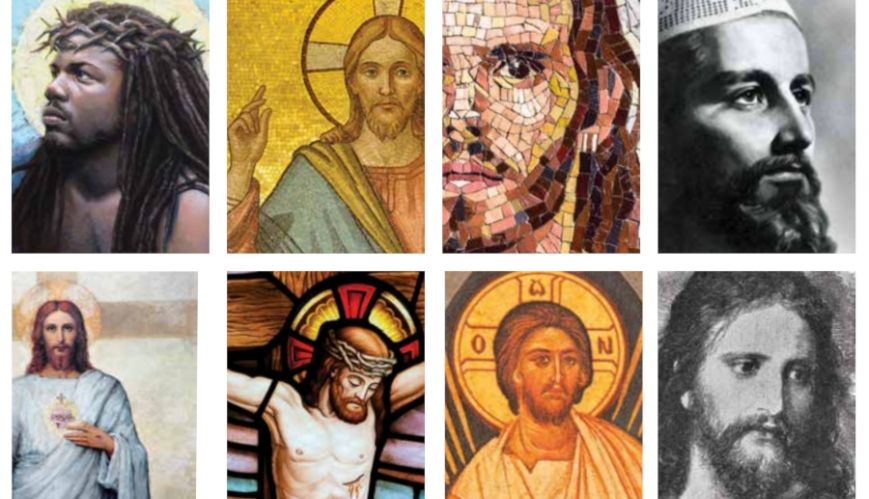Who is this man?

Who is this man?
21 April 2019
Every culture in the world has appropriated Jesus for themselves.
Jesus is the most depicted person who ever lived.
We all know what he looked like – the long hair, beard, tall slender frame, and calming demeanour. So when Richard Neave, a medical artist and expert in forensic anthropology, created a realistic depiction of what Jesus may have looked like, the results were shocking: Jesus seemed to resemble a New York taxi driver.
Jesus’ facial features were gleaned from first-century Jewish skulls and other archaeological data. Neave reasoned that Jesus would have been about 1.7m (5ft 5ins). His lifestyle would have made him muscular but slight, probably with skin as tough as old leather.
In her book What Did Jesus Look Like? historian Joan Taylor says Jesus would have had Arabiclike features. “Judaeans of this time were closest biologically to Iraqi Jews of the contemporary world,” she says. .jpg&width=300&height=424) Richard Neave's image of Jesus.
Richard Neave's image of Jesus.
According to cultural data, his black, curly hair would have been short, and his beard closely cropped using a knife. “I think what you would recognise Jesus as being, is just really someone who looked very poor,” says Taylor.
All depictions of Jesus are imaginative, of course. Biblical accounts are stubbornly silent on what he actually looked like. The way we have depicted Jesus over the ages says a lot more about us than it says about him.
It is telling that Neave’s original depiction of Jesus was later modified to give him a more dignified expression and – dare we say it – more attractive appearance. We do like our heroes handsome and powerful!
The fact that the Bible gives us no clue about what Jesus looked like is God’s first clue to us: he does not judge by human standards. In Jesus, he was about to turn all our expectations about power, success and even divinity inside out.
knowing the unknowable
Film depictions of Jesus often show him calm and emotionless, moving above the fray – the “Prozac Jesus”, as author Philip Yancey calls him.
But this is not the Jesus we find in the Bible. In fact, it’s perhaps surprising to discover how much Jesus was a people person – he constantly allowed himself to get distracted by passers-by.
Jesus seemed to build rapport almost instantly. He was easily moved by others. He was generous with his compliments – “Your faith has healed you!” he declared, deflecting credit away from himself.
But he also got angry and impatient. “Are you still so dull?” an exasperated Jesus snaps at the disciples (which, quite frankly, doesn’t seem very ‘Christian’). He cried openly and relished public displays of affection.
He was an incredibly vulnerable man – would you ever face up to your friend and ask, “Do you love me?”. Well, Jesus did! He was not play-acting at being human. Jesus felt things fully, he lived life deeply. 
In many of our depictions of Jesus, we seem to resist his humanness. It’s as if we would rather he kept a dignified distance. But Jesus mucked in with our humanity.
In Jesus, the impenetrable distance between Heaven and Earth collapsed into nothing. Through Jesus, God is saying: “Here I am. I am with you.” Because of Jesus, we can know the unknowable. We have seen the invisible God.
the architect
It’s important we understand Jesus as a fully-fledged Jewish man, because there is no doubt that his followers believed he would be the Jewish King – the Messiah who had been prophesied. He would return Israel to freedom and prosperity.
It was only a matter of time before an army would rise up to overturn the Roman Empire. Then, just as Jesus was reaching the height of his fame and popularity, he presented his manifesto.
This time he spoke plainly, not in parables. And quite frankly, it was confusing. Weird. Offensive even. “Blessed are you [more accurately translated as “Lucky you!”] when you are ‘poor in spirit’,” says Jesus (see Matthew 5-7 for the full account).
Lucky you! When you grieve, when you’re humble, merciful, pure-hearted and love peace. The people were expecting a declaration of war. Instead, they got a manifesto for meekness.
“They were looking for a builder to construct the sort of home they thought they wanted, but [Jesus] was the architect, coming with a new plan that would give them everything they needed, but within quite a new framework,” says Tom Wright, in Simply Jesus. Many complex influences collided to culminate in Jesus’ death.
The Romans were determined to stamp out any threat to their rule. But Jesus also failed to meet the Jewish expectations of the Messiah – so they concluded he must be an imposter. He was crucified as a traitor to Rome and blasphemer before God.
But the Bible claims the impossible – that Jesus very thoroughly, and very bodily, came back to life again. Wright makes the point that this story was as strange then as it is today – it had never happened before; it has never happened since.
“The stories don’t fit ... they seem to be about a person who is equally at home ‘on earth’ and ‘in heaven’. And that is, in fact, exactly what they are.” Jesus was revealed as the longed-for King; the Messiah. 
But not in any way we would recognise. He would not rule in time and space. Instead, he continues to rule through an unseen kingdom. He did not overcome with power, he infiltrated us with love. He did not stake out his greatness, he subverted us with grace.
These truths continue to upend us today. How different are we to those first century followers who wanted a king of power? We try to fit Jesus into our self-built values of consumerism, wealth, power and success.
And Jesus is still refusing to enter that building. He is still insisting on being the architect of a whole new way.
for all people
There is a joke that the greatest miracle Jesus ever performed was being a white man in first-century Israel. As the dominant culture became European, images of Jesus became blue-eyed and pale-skinned. And so Jesus became yet another symbol of colonial oppression.
Yet every culture in the world has appropriated Jesus for themselves. Artists have portrayed Jesus as black, as Asian, with dreadlocks, and with Celtic red hair.
There is even an image of Jesus as a woman – and why not? Why shouldn’t I, as a woman, be able to relate to Jesus through my feminine identity?
In New Zealand, Sofia Minion has beautifully reimagined Jesus as Māori. He is a warrior, a chief – but instead of proving his greatness with war and utu (a Māori concept which covers both the reciprocation of kind deeds, and the seeking of revenge), Ihu (Māori name for Jesus) has shown us a new path.
He proves he is the great Atua (God) by coming in forgiveness and peace. The miracle of Jesus’ life is that he lives on as part of every culture and every historical nuance.
The ability of Jesus to transcend culture, and yet fit within every culture, shows us that God really is with us. The idea that Jesus can “be my best friend” is often mocked. But, actually, isn’t that the miracle of Easter?
The divide between us and God was shattered. We can know God, and even call him friend. God and humanity were never meant to be separate. In Jesus, we were brought back into intimate relationship with each other.
jesus is everything
But that was just the beginning. The reverberations of Jesus’ life and death and life again, can be felt through the cosmos. 
“‘Heaven’ and ‘earth’ are not like oil and water, resisting each other and separating themselves out,” says Wright. He argues that the Bible sees Heaven and Earth not as separate, but as interlocking and connecting.
During his lifetime, Jesus’ constant refrain was, “The kingdom of heaven is near!” In truth, it’s so close, we can almost touch it!
When Jesus taught us to pray, he said: “Your will be done on earth, as it is in heaven.” He showed us heaven – through his miracles, his healing, his compassion and grace. “A new power is let loose on the world, the power to remake what was broken, to heal what was diseased, to restore what was lost,” sums up Wright.
The defining moment in history, when Jesus rose from the dead, was the beginning of a whole new creation that is still revealing itself today. Within three decades of Jesus’ death and resurrection, Paul – who had been an orthodox Jew until he discovered Jesus – described how “God placed all things under [Jesus’] feet and appointed him to be head over everything ... who fills everything in every way” (Ephesians 1:23).
This vision of Jesus is not just as a personal saviour, although that is important. It goes further. He brings salvation to the universe – he is restoring the whole world to its original and perfect creation. Whenever we act according to the Kingdom of Jesus – when we bring healing, love, grace and peace – we become active participants in this new creation.
Who is Jesus? He is everything.
Ingrid Barratt is the Editor of WarCry (New Zealand, Fiji, Tonga and Samoa Territory).